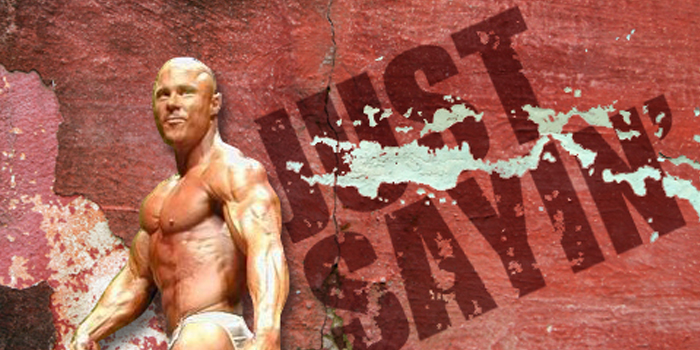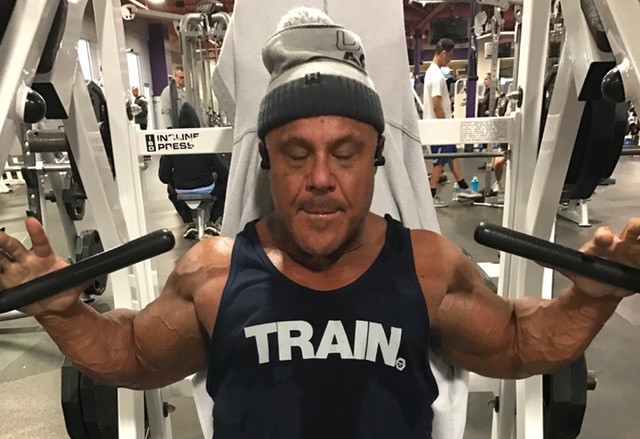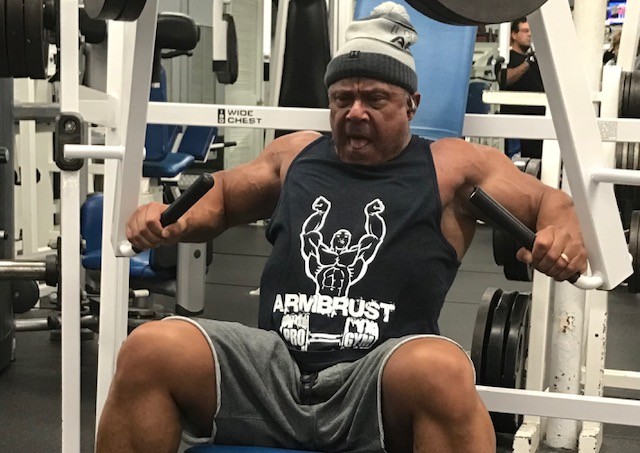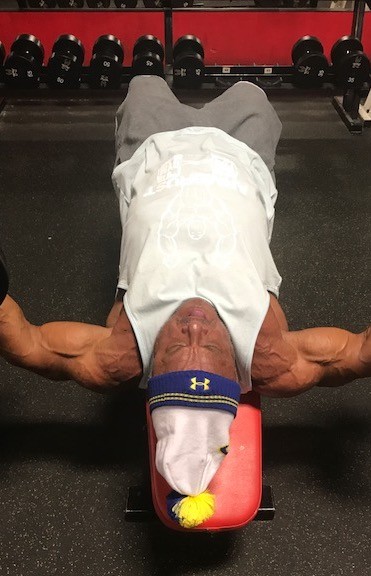
The king of all muscle groups.
The muscle group that men are judged most by other men, especially when it comes to strength.
#pantydropper
The center point of a great physique.
No other muscle group carries as much status as the pecs do.
This is exactly why most people completely screw up pec training.
With so much attention on one muscle group, it is not surprising that so many people get chest training wrong. The large majority of the time, there is too much attention put on antiquated ideas with the most popular being, “more is better.”
RECENT: Don't Make These 10 Mistakes After a Bodybuilding Contest
More weight.
More total work.
More frequency.
More… of everything.
I have compiled a list of what I have noticed in the 35 years I have spent in gyms that I feel are the five biggest obstacles to growing a great set of titties.

1. Workload/Volume/Frequency
People who are struggling to grow tata-tissue are almost always guilty of doing too many sets with too much frequency. I can’t even begin to count how many times someone will complain to me that they can’t get their chest to grow, and when I ask how many sets they are doing, they tell me upward of 20 or more sets per workout. To add insult to injury, the next comment they make is typically that they also have increased their chest training to two or even three times per week and still can’t grow.
The easiest way to know if you are doing too much work for your chest is to compare working sets in your program for chest versus working sets for back and legs. If you are doing more sets for chest than back or legs, there’s your sign.
There are significantly more muscles in the back and legs that should almost always require more work than the pectorals. Yes, the pectorals are going to benefit from different angles due to the shoulder being a multi-angle joint. That being said, the amount of work needed to create a stimulus for growth of the pectoral muscles still should be significantly less than a larger, more complicated muscle group like legs or back.
The workload is probably higher for chest training simply because that muscle group is more important to most people, but that should never impact how you train a muscle group, optimally.
2. Intensity
Even a 16-year-old will train chest to failure, usually. All you have to do is watch random people in the gym while bench pressing, and you will notice right away that they train chest harder than any other muscle group they train. Almost everyone takes their presses to failure or beyond. If you aren’t taking squats to failure and beyond or you aren’t taking barbell rows to failure and beyond, your training methodology is warped.

RELATED: How to Get Huge in Less Than 1,000 Words
The large majority of people train their chest hard enough to induce growth; the problem is recovery. It’s great to train your ass off, but if you can’t recover and grow from training that hard, it is wasted time and effort and will almost always set you up to be vulnerable to injury. You could argue that improving recovery would then provide growth using the same intensity, but that is complicating a very basic and simple process of just backing off and not training the chest with so much intensity. If you insist on maintaining the same level of intensity, then you must also be willing to maintain that same intensity for all muscle groups. Good luck with that.
3. Poor Mechanics/Form
This could take pages and pages to explain, but I will simply say that to provide the most efficient stress to a muscle, you can’t just grab a weight and move it from Point A to Point B and expect optimal growth. What usually happens with chest exercises is trainees will use too much weight or more weight than they can handle with good form. Why? I stated above that there is this weird status in the gym that says if you have a stronger bench, you’re a badass — there’s almost a hierarchy of sorts. The stronger you are on the bench, the more status you carry in the gym. I would like to think that the bigger and more developed a physique is, the more status one carries, but… I don’t have a weak chest, so there’s that. You do, or you wouldn’t be reading this.
Another mistake that a lot of people make is not understanding the difference between pressing for full pec development versus pressing with a focus on strength. Though there is obviously overlap, if you are more interested in hypertrophy and full development, your elbows should be flared, not tucked, during any chest pressing. This engages the pectorals much more (and less of the anterior delts and triceps), but it also will tend to limit poundages as well by changing the range of motion. You have to ask yourself whether your main focus is better development or if it is to get stronger.
4. Poor Exercise Selection
If you tend to do the same pressing movements over time, and those pressing movements are limiting your range of motion, you are going to struggle to achieve full development. You will also struggle to cover a muscle that fans out over the sternum and is best hit with different angles like incline and decline work. This is not to say that you can’t get your chest to grow with limited exercise selection, but it is to say that training a multi-angled muscle from different angles is likely to be more beneficial in the long run for the best development (e.g., if you never train your upper chest with any incline work, don’t expect your upper chest to be full and balanced compared to your mid and lower chest).

READ MORE: Peak Week for the Physique Competitor
One more thing to note about chest training is that there are significantly more muscle fibers firing when the muscle is in the stretched position. Exercises like dumbbell flyes are excellent exercises for the pecs but typically aren’t anywhere near as popular in routines of those who complain about lack of chest development. If you do add in this type of a movement, you better first adjust your mental approach so that your form and weight selection isn’t going to set you up for injury. A dumbbell flye is not an exercise you want to go overboard with weight or use horrible form.
5. Refusing to Give Up the Bench Press
Good luck getting someone who complains about a weak chest to drop what they have been told is the king of all chest exercises. In situations like this, I don’t even bother to attempt to talk them out of it. Instead, I go the route of convincing them to use the bench press as a finisher. Doing this will limit the amount of weight that can be used on the bench press, but it can make a world of difference in overall pec development, especially if the other four notes listed above are adhered to.
Training the pecs effectively is not terribly complicated and is really no different than training any other muscle group, for the most part. You just have to correct the mistakes that are being made because of the significance put on this muscle group for all of the wrong reasons.
Keep in mind that if what you are doing is not working very well, it isn’t going to all of a sudden start working well unless you make changes. If you think that if you just continue doing what you are doing and it will pay off one day, you will find yourself with the same shitty chest in a year. On the other hand, you can heed my advice and pay attention to these five points and become a #pantydropper in no time. Just Sayin’.










